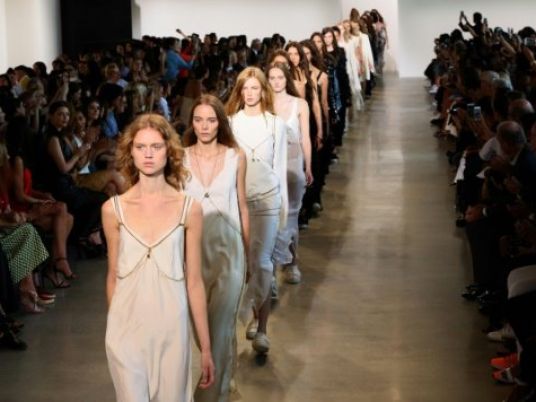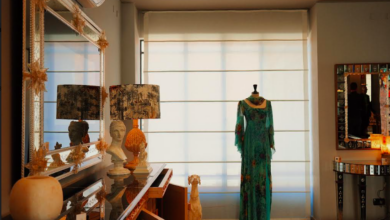
It is nothing short of a fashion earthquake.
The organizers of New York Fashion Week are considering doing away with a century of tradition and showing designers' catwalk collections only when they go on sale in the shops.
Until now, the public has had to wait between four and six months before they could buy the clothes featured in each season's shows.
But the Council of Fashion Designers of America (CFDA), which runs New York's twice-yearly catwalk shows, claims the "system is broken" and no longer works in a world obsessed with "fast fashion".
Its director, the designer and former princess Diane von Furstenberg, claims the system frustrates the public and gives counterfeiters time to rip off the latest trends.
"The only people who benefit are the people who copy," she told the trade bible Women's Wear Daily.
Von Furstenberg and the CFDA — who have commissioned a consultants' report into how the fashion calendar might be shaken up — said the press and retailers should still be given sneak previews of each new season's creations behind closed doors so orders could be placed.
But the razmataz of the big runway shows should be opened up to the public, she argued, and turned into major entertainment events.
Now only fashion buyers, journalists and celebrities are allowed to attend the catwalk shows, with seats highly sought after.
Paris, Milan hit back
But the Americans may not have it their way, with Paris and Milan — the world's traditional fashion capitals — roundly rejecting the idea.
With their fashion industries more geared towards craft and artistry than the mass-market US trade, the fashion world appears to be heading for a stand-off.
"Our industry is experiencing exceptional growth," said Ralph Toledano, head of France's Couture Federation, saying it was wrong to think the status quo no longer works and warning that such radical change might create more problems than it solves.
"This all comes from an idea that we frustrate the public by showing them things that they cannot yet buy. Which is true. And that maybe is a problem we should think about," Toledano told AFP.
"But it is not the best solution for Paris, which is the capital of fashion know-how and creativity. We want to show clothes in a manner fitting to the way they were created.
"You cannot say to a designer, 'We are going to freeze your creations for months.' Some of them sometimes tell us the day after a catwalk show that they don't like some of the things they came up with themselves — imagine what it would be like after several months," he added.
And Toledano dismissed as unrealistic von Furstenberg's idea that new collections could be shown secretly to the press and buyers without details leaking in the age of Twitter and WhatsApp.
His opposite number in Milan, Carlo Capasa, was equally sceptical.
"There will be a black market in photos of designs," he claimed, warning that turning fashion shows into a "phenomenon of pure marketing risked killing the way catwalk shows promote innovation."
Penalize new designers
Capasa feared the system the Americans were proposing pandered to multinational brands, and "would penalize new labels who might lose the powerful push that a good catwalk show can give", he said in a statement.
For several years, London has been experimenting with a halfway house between the two systems, organizing a "Fashion Weekend" at the end of each fashion week for the general public.
Caroline Rush, director of the British Fashion Council, said with many followers of fashion watching shows almost live through social media, the lines were already blurring.
"There is no doubt in future seasons these lines will blur even more as designers opt to do in-season shows. However, we need to ensure those businesses that rely on platforms such as fashion weeks to reach new wholesale partners and media continue to have the opportunity to do so," she added.
Some labels are already trying to find alternatives to the catwalk circus, with Versus Versace — the youth-orientated brand of the Italian fashion house — putting its new designs directly on sale on its website.
And the French brand Givenchy set up a lottery for 800 places at its last New York show in September.
It is not the first time such a democratic approach has been tried. Thousands of fashion fans bought tickets to watch a Thierry Mugler show in Paris in 1984.




